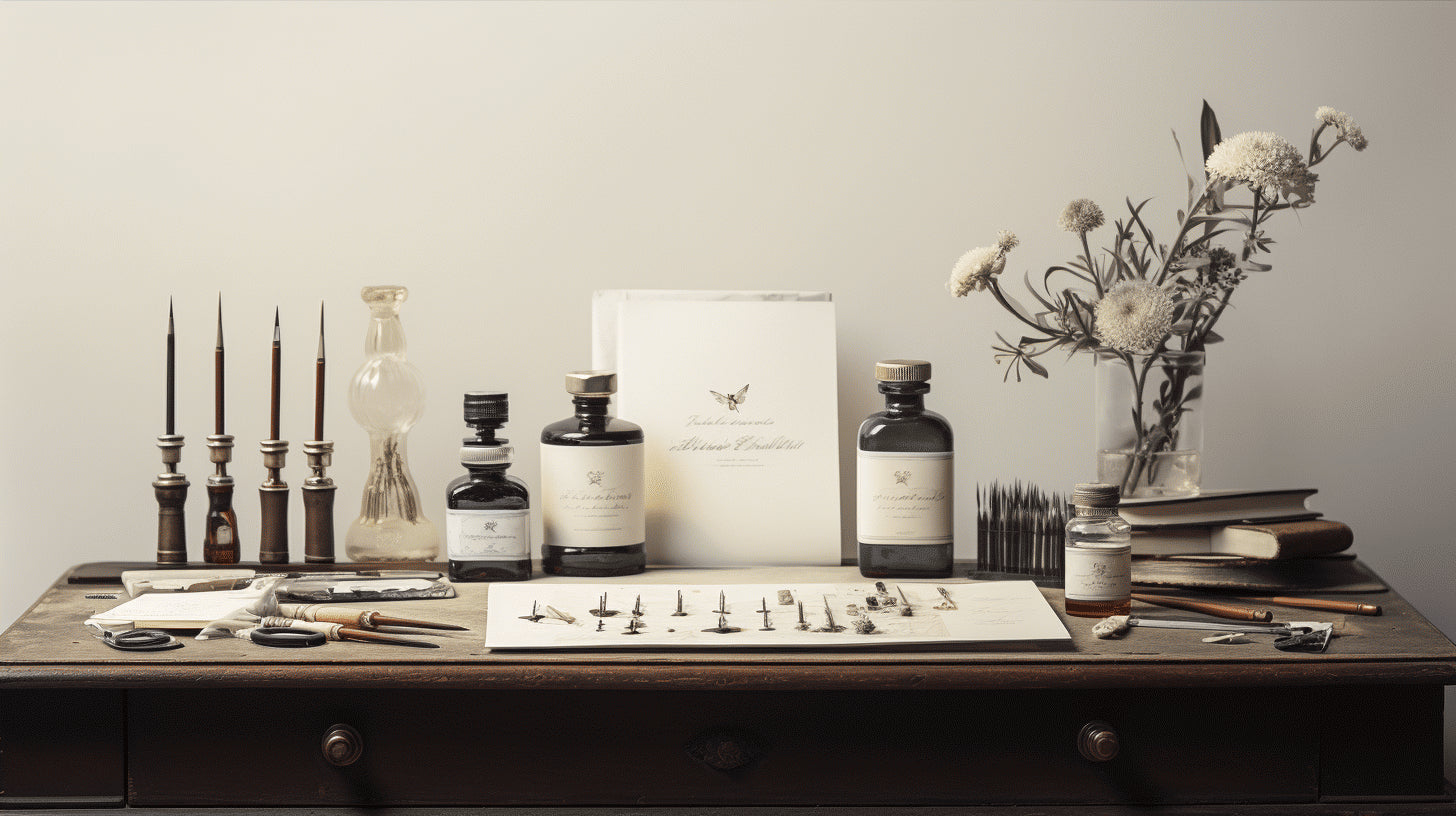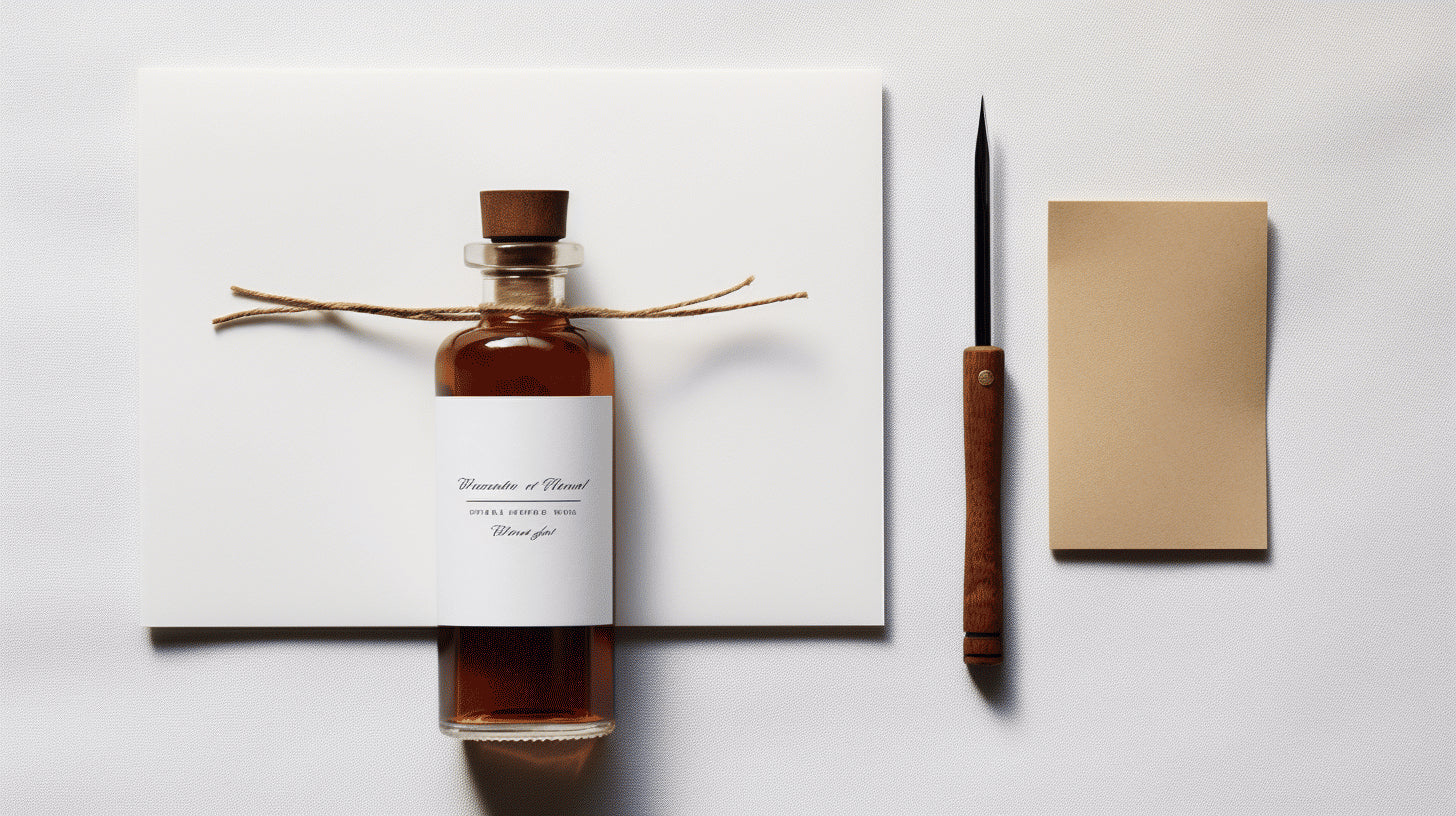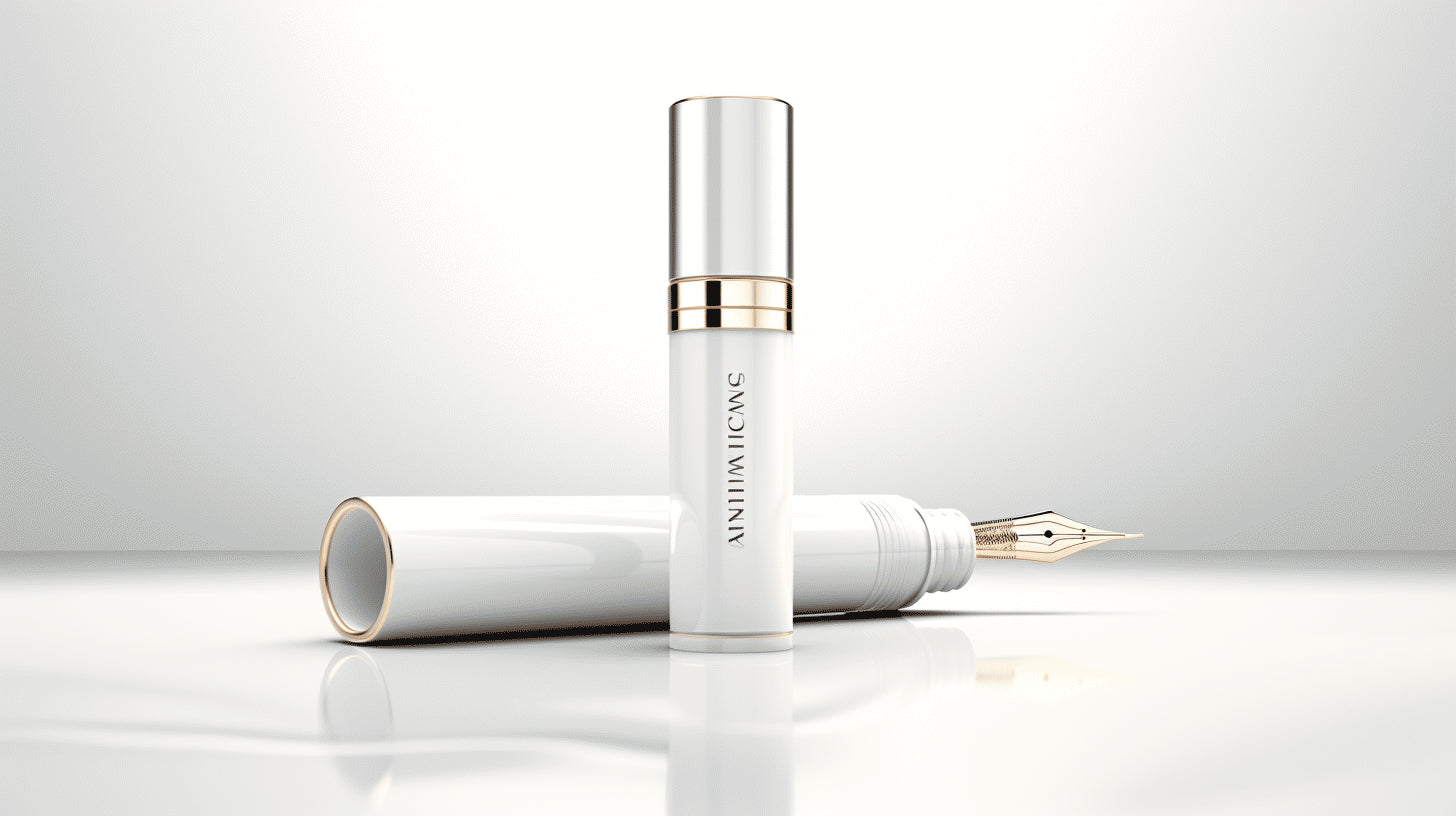
Preserving Tradition: Exploring the Allure of Antique Fountain Pens
In a digital age where most of our written communication is done through keyboards and touch screens, there is something undeniably charming about putting pen to paper with a classic fountain pen. These elegant writing instruments have a timeless appeal that transcends the convenience of modern technology. The allure of antique fountain pens lies not only in their functionality but in the stories they hold and the craftsmanship that went into creating them.
Whether you are a seasoned collector or someone who is simply drawn to the beauty and nostalgia of fountain pens, exploring the world of vintage pens can be a rewarding and fascinating journey. From the evolution of fountain pens to their historical significance and the art of restoring them, every aspect adds to the intrigue of these treasured artifacts.
In this article, we will delve into the historical significance of fountain pens, why collecting vintage pens is so captivating, the vintage fountain pen market, and the art of restoring these writing treasures. Whether you are a collector, an enthusiast, or simply curious about the world of fountain pens, this article will guide you through the allure of antique fountain pens and all they represent. So grab your favorite pen and let's dive into the world of vintage fountain pens together.
Historical Significance of Fountain Pens
Before the days of ballpoint pens and digital devices, there was the majestic fountain pen. A symbol of sophistication and elegance, fountain pens have played a significant role throughout history, leaving an indelible mark on the world of writing. Over the years, they have not only evolved in design and functionality but also contributed to the overall writing experience. Let's delve into the historical significance of fountain pens and explore their journey through time.
Evolution of Fountain Pens
The concept of the fountain pen dates back to ancient times, where people used reed pens to write by dipping them in ink. However, it wasn't until the 10th century that the first recorded mention of a "fountain pen" was made by an Egyptian. This early version consisted of a narrow tube filled with ink, allowing for a continuous flow onto the writing surface.
In the 19th century, the modern fountain pen as we know it today started to take shape. Lewis Waterman, an American inventor, revolutionized the fountain pen industry in 1884. His invention utilized capillary action to smoothly draw ink from a reservoir onto the nib, providing a fuss-free writing experience.
From that point forward, fountain pens continued to evolve and improve, featuring various filling mechanisms such as piston fillers, lever fillers, and cartridge converters. Each advancement aimed to enhance convenience and offer writers a more seamless writing experience.
Contribution to Writing Experience
Fountain pens have undoubtedly made their mark on the writing experience, offering a unique way to put thoughts on paper. Here are a few ways in which these remarkable writing instruments have contributed to the art of writing:
- Smooth and Effortless Writing: The flow of ink from a fountain pen onto the paper creates a smooth and fluid writing experience. Unlike ballpoint pens that require pressure to produce ink, fountain pens effortlessly glide across the page, resulting in less strain on the hand and a more comfortable writing experience.
- Personal Expression: Fountain pens allow for a wide range of customization options, from nib variations to ink choices. Writers can choose between different nib sizes, such as fine, medium, or broad, to achieve the perfect line thickness for their writing style. Additionally, an array of ink colors adds a touch of personal expression to every stroke.
- Style and Artistry: Throughout history, fountain pens have been embraced not only for their functionality but also for their artistic and style significance. From ornate and intricate designs to sleek and minimalist aesthetics, fountain pens reflect the art, style, and values of different eras.
- Legacy and Collectibility: Fountain pens have transcended their utilitarian purpose and became collectibles. Antique fountain pens now hold historical and sentimental value, sought after by enthusiasts and collectors alike. They unlock a window into the past, showcasing the craftsmanship and ingenuity of bygone eras.
The historical significance of fountain pens cannot be overstated. From their humble beginnings to their status as cherished heirlooms, fountain pens have left an indelible mark on the world of writing. They continue to captivate writers with their elegance, smooth writing experience, and timeless appeal.
For an even deeper dive into the world of antique fountain pens and their historical significance, check out Antique Pens and Their Historical Significance.
Why Collect Vintage Fountain Pens?
Imagine holding a piece of history in your hands, an object that has witnessed decades of stories, written in the elegant strokes of ink on paper. Vintage fountain pens offer a unique and timeless allure that captivates collectors of all backgrounds. But what exactly is it that makes these writing instruments so desirable? Let's delve into the reasons why collecting vintage fountain pens is a rewarding pursuit.
Collectibility
Vintage fountain pens can be considered investment pieces that may increase in value over time. Just like other collectibles, the rarity and demand for these pens can drive up their market prices. Owning a valuable vintage fountain pen not only brings a sense of satisfaction, but it can also be an asset that appreciates in value over the years.
Antique Pens and Their Rarity - Unlocking the Legacy: Exploring Antique Pens and Their Rarity
Craftsmanship
One of the main draws of vintage fountain pens is their exquisite craftsmanship. These pens were meticulously made by skilled artisans who poured their passion and craftsmanship into every detail. From the delicate nibs to the ornate designs, these pens showcase the artistry and dedication of their makers. The feel of a vintage fountain pen in your hand is a tactile experience that simply can't be replicated by modern mass-produced pens.
Historical Connections
Vintage fountain pens hold a piece of history within them. They were used by the people who came before us, leaving behind a trail of stories, thoughts, and ideas. Many famous figures throughout history, such as Albert Einstein, expressed their genius through the ink that flowed from these pens onto paper. Owning a vintage fountain pen connects you to the past, allowing you to feel a sense of kinship with those who wielded these writing instruments.
"Vintage fountain pens are cherished for their craftsmanship, aesthetics, and they used by significant historical figures such as Albert Einstein." - Antique Pens and Their Rarity
Vintage fountain pens, especially those made by well-known manufacturers, are highly valued by collectors due to their historical significance and rarity. Whether you appreciate the collectibility, craftsmanship, or historical connections, there is something truly special about holding a vintage fountain pen in your hand. It embodies an era long gone, yet still carries the charm and elegance that continues to captivate collectors today. So why collect vintage fountain pens? Because they offer a glimpse into history, a tangible connection to the past, and a source of inspiration for generations to come.
Vintage Fountain Pen Market Overview
In the world of writing instruments, vintage fountain pens hold a special charm. These pens evoke nostalgia for a bygone era when putting pen to paper was an art form. Today, collectors and enthusiasts alike actively engage in the vintage fountain pen market. Let's delve into the details of this unique market and explore its various facets.
Price Range
Vintage fountain pens can vary widely in terms of price. From entry-level options to rare and highly sought-after pieces, there is something for every budget. Here are some key points to consider regarding the price range in the vintage fountain pen market:
- The value of vintage fountain pens can range from as low as $50 to several thousand dollars, depending on factors such as brand, rarity, condition, and historical significance.
- High-end vintage pens from esteemed brands like Montblanc, Parker, and Waterman can command premium prices due to their craftsmanship and reputation.
- On the other hand, more affordable vintage pens from lesser-known brands can still offer a delightful writing experience without breaking the bank.
Demand VS Supply
When it comes to the demand and supply dynamics in the vintage fountain pen market, it's interesting to note that the market is primarily driven by pen users rather than collectors. Some key points to consider in this regard include:
- While collectors do play a role in the vintage pen market, the majority of buyers are individuals who appreciate the unique writing experience that vintage fountain pens offer.
- This emphasis on functionality, rather than pure collecting, means that vintage fountain pens in good working condition are in high demand.
- Additionally, there is a market for vintage pens in need of restoration or repair. Some collectors see value in rehabilitating these pens and bringing them back to their former glory.
Preferred Platforms to Buy Vintage Fountain Pens
In today's digitally connected world, there are numerous platforms that cater to buyers and sellers of vintage fountain pens. Here are some popular avenues for purchasing these exquisite writing instruments:
- Specialized Online Marketplaces: Platforms such as Etsy, eBay, and The Fountain Pen Network Classifieds offer a wide array of vintage fountain pens for sale, allowing collectors and enthusiasts to browse, compare prices, and make purchases conveniently.
- Pen Shows and Expos: Attending pen shows and expos provides a unique opportunity to explore a wide variety of vintage pens in person. These events often bring together a community of passionate pen enthusiasts and offer a chance to interact directly with sellers and collectors.
- Specialty Pen Shops: Some brick-and-mortar stores specialize in vintage fountain pens, providing a curated selection of pens and personalized service. These shops allow customers to physically handle the pens before making a purchase.
In conclusion, the vintage fountain pen market is thriving, offering a delightful blend of history, craftsmanship, and functionality. Whether you're a collector or simply appreciate the art of writing, there is something enchanting about owning and using a vintage fountain pen.
The Art of Restoring Vintage Pens
Restoring vintage pens is not simply a task; it's an art form. With the ability to bring these exquisite writing instruments back to their former glory, collectors and pen enthusiasts alike are fascinated by the process of rejuvenating these delicate treasures. The art of restoring vintage pens adds value and appeal to the already thriving vintage pen market.
Why Restore Vintage Pens?
There are several reasons why individuals choose to restore vintage pens rather than purchasing new ones. Here are a few compelling reasons:
- Historical Significance: Vintage pens often hold a piece of history in their craftsmanship. By restoring these pens, you not only preserve their historical significance but also get to experience writing with a piece of the past.
- Unique and Exclusive: Vintage pens are often one-of-a-kind or produced in limited quantities. By restoring them, you have the opportunity to own a unique and exclusive writing instrument that sets you apart from the crowd.
- Craftsmanship: Vintage pens are meticulously crafted with an attention to detail that is often lacking in modern counterparts. Restoring these pens not only showcases the craftsmanship of the original maker but also allows you to appreciate the fine artistry involved.
- Sustainability: Restoring vintage pens promotes sustainability by diverting items from landfills and reducing the need for the production of new writing instruments.
The Restoration Process
Restoring a vintage pen involves expertise, patience, and a meticulous approach. Here's a brief overview of the typical restoration process:
- Cleaning: The pen is thoroughly cleaned to remove dried ink, dirt, and any other contaminants that may hinder its functionality or appearance.
- Nib Restoration: The nib, the heart of any pen, is carefully examined and repaired if needed. The nib is aligned, smoothed, and tuned to ensure a smooth and consistent writing experience.
- Reservoir Replacement: The pen's reservoir, also known as the ink sac, is replaced to restore its ability to hold ink. This step ensures that the pen functions as intended.
- Polishing and Finishing: The pen is gently polished to remove scratches, restore its luster, and enhance its aesthetic appeal. Delicate materials, such as celluloid or ebonite, require special care during this process.
- Testing and Adjustments: After restoration, the pen is tested to ensure its functionality, ink flow, and overall performance. Adjustments are made as necessary to achieve optimal performance.
Preserving the Vintage Appeal
While the restoration process aims to bring a vintage pen back to life, it is crucial to strike a balance between restoration and preserving its original charm. Vintage pen enthusiasts appreciate the patina and wear that tell the story of its journey through time. Over-restoration can diminish this character and reduce its value for collectors.
In conclusion, restoring vintage pens is an intricate art that captivates pen enthusiasts and collectors. By embracing the restoration process, we bring these timeless writing instruments back to their former glory, preserving history and enhancing their value. Whether you are an avid collector or simply appreciate the craftsmanship of vintage pens, the art of restoring vintage pens offers a unique and rewarding experience.
Read more about the art of vintage pens in the Vintage Exploring Antique Fountain Pens article.
Conclusion
In conclusion, antique fountain pens hold a timeless appeal that continues to captivate collectors and enthusiasts alike. These treasured writing instruments embody a rich history of craftsmanship, elegance, and the art of writing. Whether you are drawn to the collectibility, the intricate details of the pens, or the historical connections they embody, antique fountain pens offer a unique and fulfilling experience.
If you are enchanted by the allure of antique fountain pens and desire to enhance your writing experience, consider exploring Wood Fountain Pens. With a commitment to excellence and a passion for craftsmanship, Wood Fountain Pens offers a stunning collection of wooden fountain pens that redefine the joy of writing. Handcrafted with precision, these pens embody the elegance and artistry that has made antique fountain pens so sought after. Elevate your writing experience with Wood Fountain Pens and indulge in the beauty of the written word.
Visit Wood Fountain Pens to discover a world of exquisite wooden fountain pens that will inspire and delight. Embrace the allure of writing with a pen that is a true work of art.
Frequently Asked Questions
-
What is an antique fountain pen?
An antique fountain pen refers to a pen that was manufactured many years ago and is no longer in production. These pens often hold historical and sentimental value, and are sought after by collectors and enthusiasts.
-
Why are antique fountain pens so popular?
Antique fountain pens are popular due to their unique and timeless designs, superior craftsmanship, and the nostalgia they evoke. They offer a connection to the past and represent a slower, more elegant writing experience.
-
Can antique fountain pens still be used for writing?
Yes, antique fountain pens can still be used for writing, provided they are in good working condition. However, it is important to use the appropriate ink and maintain them properly to preserve their functionality.
-
Where can I find antique fountain pens for sale?
Antique fountain pens can be found in antique stores, vintage markets, online auction websites, and specialized pen shops. It is advisable to research sellers, check authenticity, and inspect the condition before making a purchase.
-
How do I take care of an antique fountain pen?
To take care of an antique fountain pen, clean it regularly using pen flush or water, avoid exposing it to extreme heat or cold, store it in a protective case when not in use, and have it serviced by a professional if needed.







Leave a comment
This site is protected by hCaptcha and the hCaptcha Privacy Policy and Terms of Service apply.